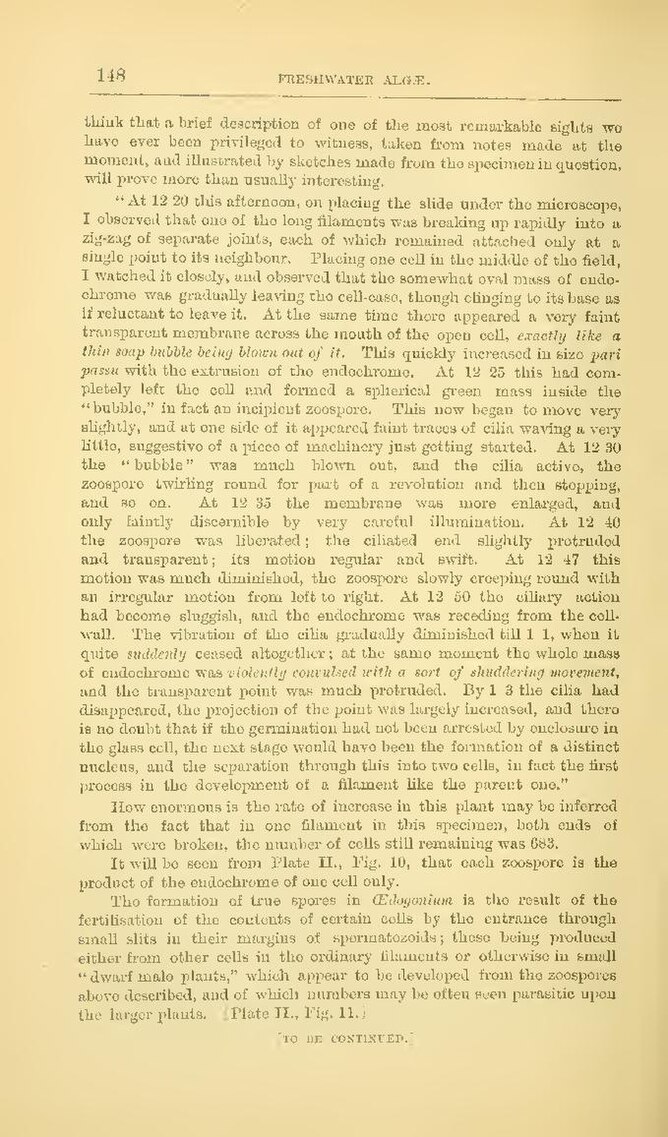think that a brief description of one of the most remarkable sights we have ever been privileged to witness, taken from notes made at the moment, and illustrated by sketches made from the specimen in question, will prove more than usually interesting,
“At 12 20 this afternoon, on placing the slide under the microscope, I observed that one of the long filaments was breaking up rapidly into a zig-zag of separate joints, each of which remained attached only at a single point to its neighbour, Placing one cell in the middle of the field, I watched it closely, and observed that the somewhat oval muss of endochrome was gradually leaving the cell-case, though clinging to its base us if reluctant to leave it, At the same time there appeared a very faint transparent membrane across the mouth of the open cell, exactly like a thin soap bubble being blown out of it. This quickly increased in size pari passu with the extrusion of the endochrome, At 12 25 this had completely left the cell and formed a spherical green rags inside the "bubble," in fact an incipient zoospore, This now began to move very slightly, and at one side of it appeared faint traces of cilia waving a very little, suggestive of a piece of machinery just getting started, At 12 30 the "bubble" was munch blown out, and the cilia active, the zoospore twirling round for put of a revolution and then stopping, and so on. At 12 35 the membrane was more enlarged, and only faintly discernible by very careful illumination, At 12 46 the zoospore was liberated; the ciliated end slightly protruded and transparent; its motion regular and swift, At 12 47 this motion was much diminished, the zoospore slowly creeping round with an irregular motion from left to right. At 12 50 the ciliary action had become sluggish, and the endochrome was receding from the cell wall. The vibration of the cilia gradually diminished till 1, when it quite suddenly ceased altogether; at the same moment the whole mass of endochrome was violently convulsed with a sort of shuddering movement, and the transparent point was much protruded. By 1 3 the cilia had disappeared, the projection of the point was largely increased, and there is no doubt that if the germination had not been arrested by enclosure in the glass cell, the next stage would have been the formation of a distinct nucleus, and the separation through this into two cells, in fact the first process in the development of a filament like the parent one.”
How enormous is the rate of increase in this plant may be inferred from the fact that in one filament in this specimen, both ends of which were broken, the number of cells still remaining was 683.
It will be seen from Plate II, Fig. 10, that each zoospore is the product of the endochrome of one sell only.
The formation of true spores in Œdogonium is the result of the fertilisation of the contents of certain cells by the entrance through small slits in their margins of spermatozoids; these being produced either from other cells in the ordinary filaments or otherwise in small "dwarf male plants," which appear to be developed from the zoospores above described, and of which numbers may be often seem parasitic upon the larger plants, [Plate II. Fig. 11.]
"To be continued."
